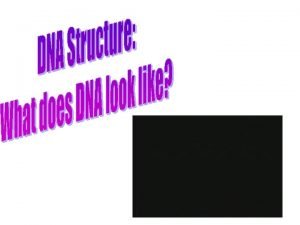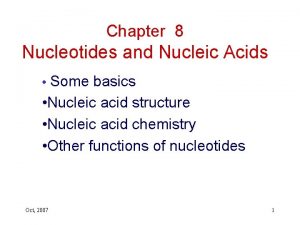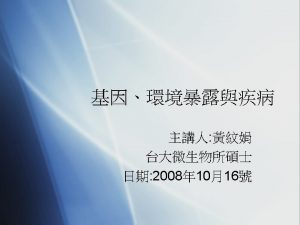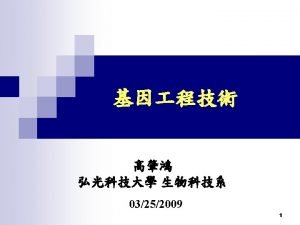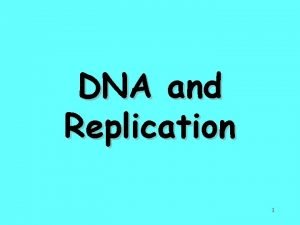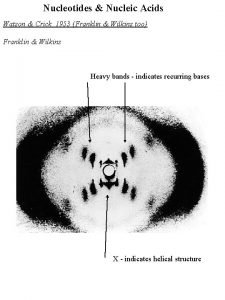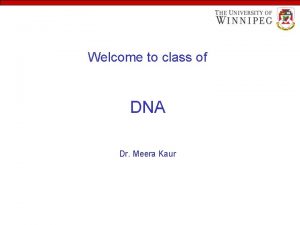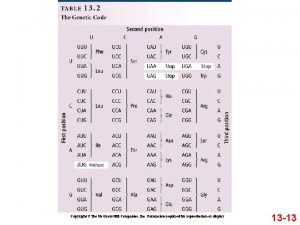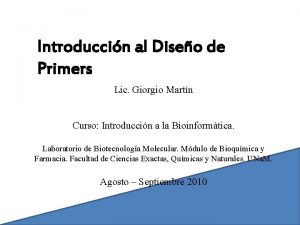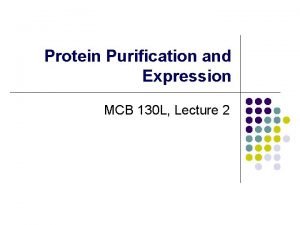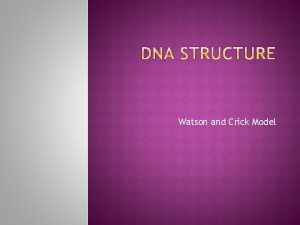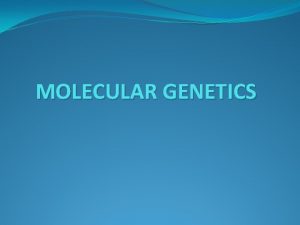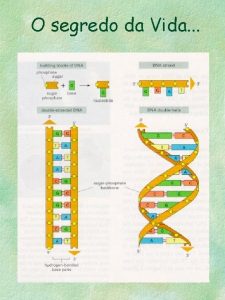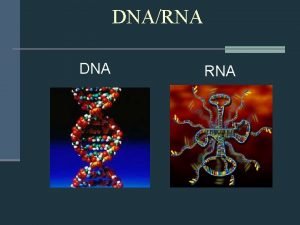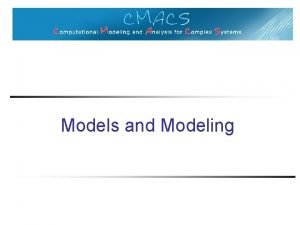Advances since Watson Crick http www chemheritage orgclassroomchemachpharmaceuticalswatsoncrick














- Slides: 14

Advances since Watson & Crick http: //www. chemheritage. org/classroom/chemach/pharmaceuticals/watson-crick. html

Applications of DNA Technology • DNA fingerprinting in forensics • Human Genome Project

DNA Fingerprinting • Every individual (except identical twins) has a unique DNA fingerprint • These “fingerprints” can be used in forensics to help determine possible suspects in a crime • What kinds of cells are used for the collection of DNA evidence?

Kinds of Samples • They can use: – – – Hair Skin Saliva Blood (Why can’t red blood cells be used? ) Semen Vaginal Secretions • What are the steps a forensic scientist would use if he/she found a hair at a crime scene?

Step 1: Amplify the DNA • There is not enough DNA in one hair to identify the “fingerprint, ” so many copies of the DNA need to be made • PCR (polymerase chain reaction) is the process used to make billions of copies of the DNA • This process can be used on impure, nonliving samples and only takes hours

Step 2: Cut the DNA • Restriction enzymes cut DNA at specific locations • For example: The restriction enzyme Eco. R 1 cuts the DNA at the sequence GAATTC, between the G and the A

Step 2, cont’d. • The two samples in the example are from different sources, so the cuts happen in different places. • The result is that the DNA is cut into fragments and the lengths will vary with individuals.

Step 3: Gel Electrophoresis • http: //commons. wikimedia. org/wiki/Image: Gel_electrophoresis_apparatus. JPG • Once the DNA has been cut, it can be separated into bands (based on their size) by using gel electrophoresis. • This technique involves loading the DNA sample (which is made up of lots of fragments) into the negative end of a gel. • The DNA fragments move towards the positive end as a current runs through the gel (remember, opposites attract!).

Step 3: cont’d. • Fragments of DNA settle out in the gel and form bands. • Large fragments don’t travel as far as short fragments. • These bands can be seen after staining and destaining the gel.

ACTIVITY TIME! • As a class, solve the mystery of It Takes a Lickin’ by visiting the following website: • http: //www. pbs. org/wgbh/nova/sheppard/lab 01. html

Step 4: Genetic Markers • Cutting an entire genome will produce thousands of bands to study– a way to reduce the amount of work forensic scientists is to use genetic markers. • Genetic markers occur on particular stretches of non-coding DNA that are unique to each person. • These are the areas that are analyzed for court evidence. http: //picturethis. pnl. gov/Picture. T. nsf/All/3 UAR 6 A? opendocument

Human Genome Project • In 1990, The Department of Energy, The National Institutes of Health, and the private sector began work on mapping the entire human genome. • The organizations planned for this project to take 15 years, but it was completed in 2003.

Human Genome Project, contd. • Project goals: – identify all the approximately 20, 000 -25, 000 genes in human DNA, – determine the sequences of the 3 billion chemical base pairs that make up human DNA, – store this information in databases, – improve tools for data analysis, – transfer related technologies to the private sector, and – address the ethical, legal, and social issues (ELSI) that may arise from the project. – http: //www. ornl. gov/sci/techresources/Human_Genome/project/about. shtml

DISCUSSION TIME! • What do you think the implications of the Human Genome Project are? • What advances in science can now be made because the genome has been mapped? • What are the pros and cons of this knowledge?
